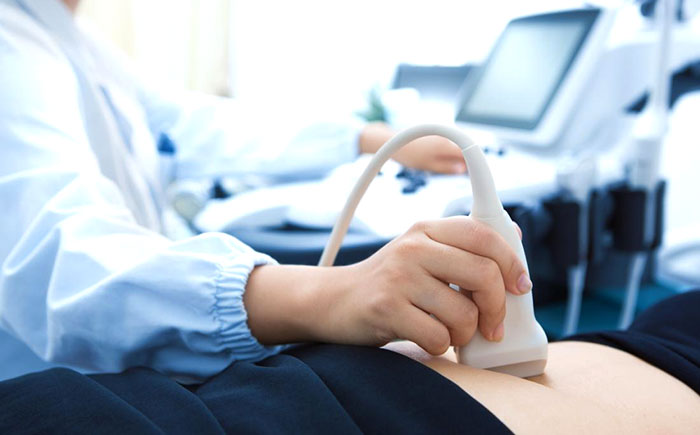
Nuchal translucency test (NT scan)
The NT scan is an ultrasound done in the first trimester to determine your baby's risk of having Down syndrome and some other chromosomal abnormalities. It's usually done along with a blood test (Dual marker).
What is the nuchal translucency test?
The nuchal translucency test (also called the NT scan) uses ultrasound to assess risk of having Down syndrome (DS), Neural tube defect etc.
It's offered to all pregnant women, along with a blood test, in first-trimester combined screening. The NT scan is advised between 11 and 14 weeks of pregnancy.
In addition to testing for Down syndrome (trisomy 21), the NT scan will also screen for:
- Trisomy 18 (Edward's syndrome)
- Trisomy 13 (Patau syndrome)
- Some other chromosomal abnormalities
- It can detect "soft markers" of chromosome disorders, such as short limbs, a bright dot in the heart, a bright bowel, and certain problems in the kidneys. It can also look for anatomical defects, such as spina bifida
- Some structural problems, such as heart, abdominal wall, and skeletal defects
The NT scan is not invasive, but it's not 100 percent conclusive. Diagnostic testing such as CVS or amniocentesis are necessary to confirm a positive screen result.
Remember that a normal screening result (screen negative) isn't a guarantee that your baby has normal chromosomes, but it does suggest that a problem is unlikely. Likewise, an abnormal screening result (screen positive) doesn't mean that your baby has a chromosomal problem – just that your baby is more likely to have one.
Most screen-positive babies turn out not to have a problem: Only about a third of babies with an increased nuchal translucency measurement turn out to have chromosomal defects.
How accurate is the nuchal translucency test?
The NT scan alone will detect about 70 to 80 percent of babies with DS (depending on which study you look at). The detection rate for the NT scan plus a first-trimester blood test ranges from 79 to 90 percent. (Most tests will include both the NT scan and the blood test.)
What happens if my NT scan indicates a problem?
With the help of your practitioner or a genetic counsellor, it will be decided whether the results indicate a high enough risk that additional procedure like CVS or amniocentesis is required to get a definitive diagnosis.
If you decide not to have diagnostic testing, you can get more information about your baby's health and development by NIPT (a blood test that's available to all pregnant women beginning at 10 weeks of pregnancy), the quad screen (a blood test in the second trimester), and a detailed ultrasound at 18 to 20 weeks.
ANOMALY SCAN
A sonographer will carry out an anomaly scan at around 18 to 20 weeks of pregnancy.
Second-trimester ultrasound screens for aneuploidies, such as Edwards syndrome and Patau syndrome, are based on looking for soft markers and some predefined structural abnormalities. Soft markers are variations from normal anatomy, which are more common in aneuploid fetuses (fetus with chromosomal abnormality) compared to euploid ones. Placental evaluation is vital to rule out placenta previa.
Various Anomalies evaluated during Anomaly scan
| Fetal Conditions | Placental Conditions |
|---|---|
| Anencephaly | Placenta previa |
| Cleft lip | Vasa previa |
| Diaphragmatic hernia | Placenta accreta |
| Gastrochisis | 2 vessel cord |
| Omphalocele | Succenturiate lobe |
| Congenital heart defect | Circumvallate placenta |
| Renal agenesis | Velamentous cord insertion |
| Spina bifida | |
| Osteochondrodysplasia | |
| Edwards syndrome | |
| Patau syndrome |
Can the scan harm me or my baby?
There are no known risks to the baby or you from having an ultrasound scan.
